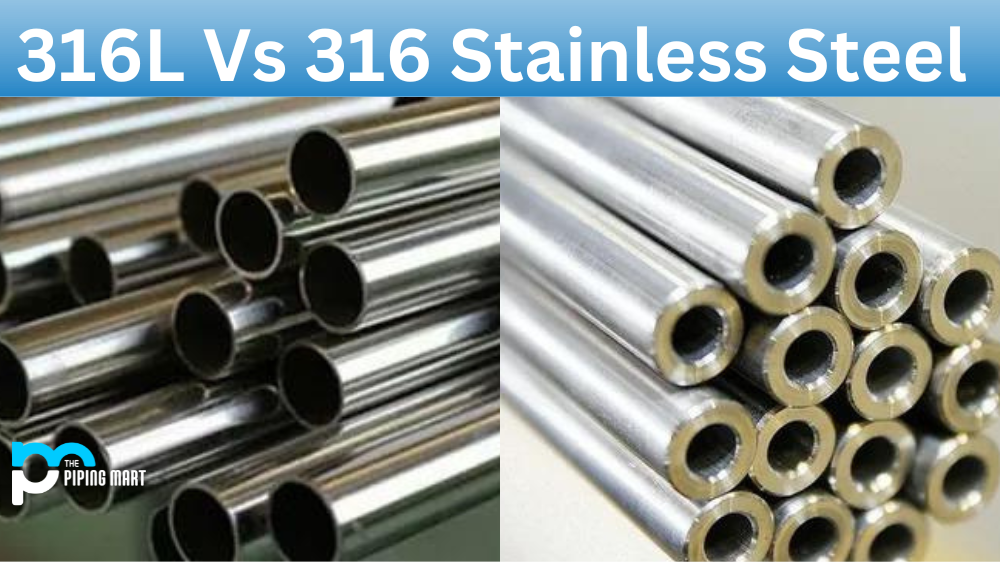316L and 316 stainless steel are used in producing jewellery, watches, and medical instruments. But beyond that, what is the difference between these two alloys? Let’s dive into the differences between the two grades so you can make an informed decision when selecting your material.
Difference Between 316L and 316 Stainless Steel
Mechanical Properties
The primary difference between 316L and 316 stainless steel is its mechanical properties. Both contain a similar amount of chromium, 16–18%, but the L grade has a slightly lower carbon content. This results in a slightly lower tensile strength for the L grade, ranging from 70 ksi to 80 ksi, compared to 80 ksi to 90 ksi for type 316.
Corrosion Resistance
The second major difference between these two grades is corrosion resistance. Generally speaking, type 316 is more resistant to corrosion than type 316L due to its higher nickel content (2-3% vs 1%), but it also has a higher risk of developing stress corrosion cracking than type 316L does. For this reason, type316L is often preferred for applications requiring resistance to general corrosion, such as food processing equipment and marine environments.
Corrosion resistance is also improved by increasing chromium levels; therefore, type316L typically provides better corrosion resistance than type316 because it has more chromium (18% vs 16%). Generally speaking, both grades exhibit excellent performance in freshwater environments with slight differences in saltwater environments where type316 may be more prone to pitting or crevice corrosion due to its higher nickel content.
- 316L is the low-carbon version of 316 stainless steel.
- 316L is less susceptible to sensitization than 316 stainless steel.
- 316L has better weldability than 316 stainless steel.
- 316L is more resistant to intergranular corrosion than 316 stainless steel.
- The main difference between 316L and 316 stainless steel is the carbon content; 316L has a lower carbon content than 316 stainless steel.
Conclusion:
In summary, several key differences between types 316L and 316 stainless steel should be considered when making a selection for your application. Type316 offers superior mechanical properties and improved resistance to certain corrosive conditions, while Type316L provides superior corrosion and weldability due to its lower carbon content. It all comes down to your specific application requirements – if you need one over the other, do your research before choosing either grade for your project! Metric Marketing can help fabricators choose the best material for their needs, so don’t hesitate to reach out if you have questions about which alloy will work best for your project!

A passionate metal industry expert and blogger. With over 5 years of experience in the field, Palak brings a wealth of knowledge and insight to her writing. Whether discussing the latest trends in the metal industry or sharing tips, she is dedicated to helping others succeed in the metal industry.




